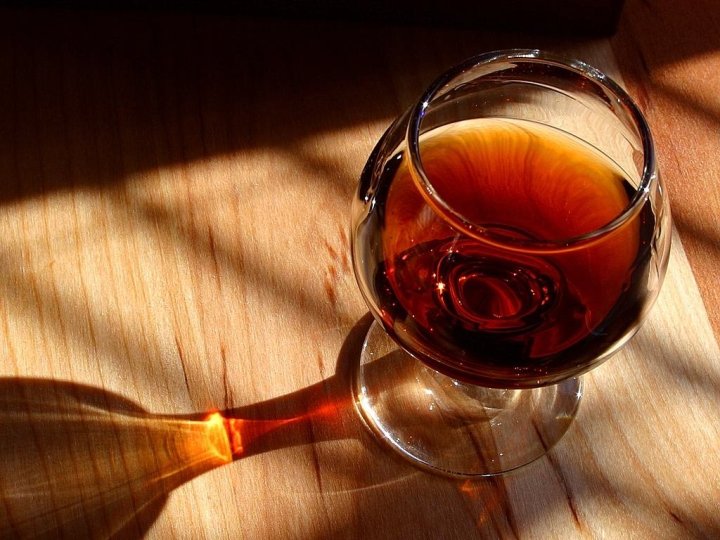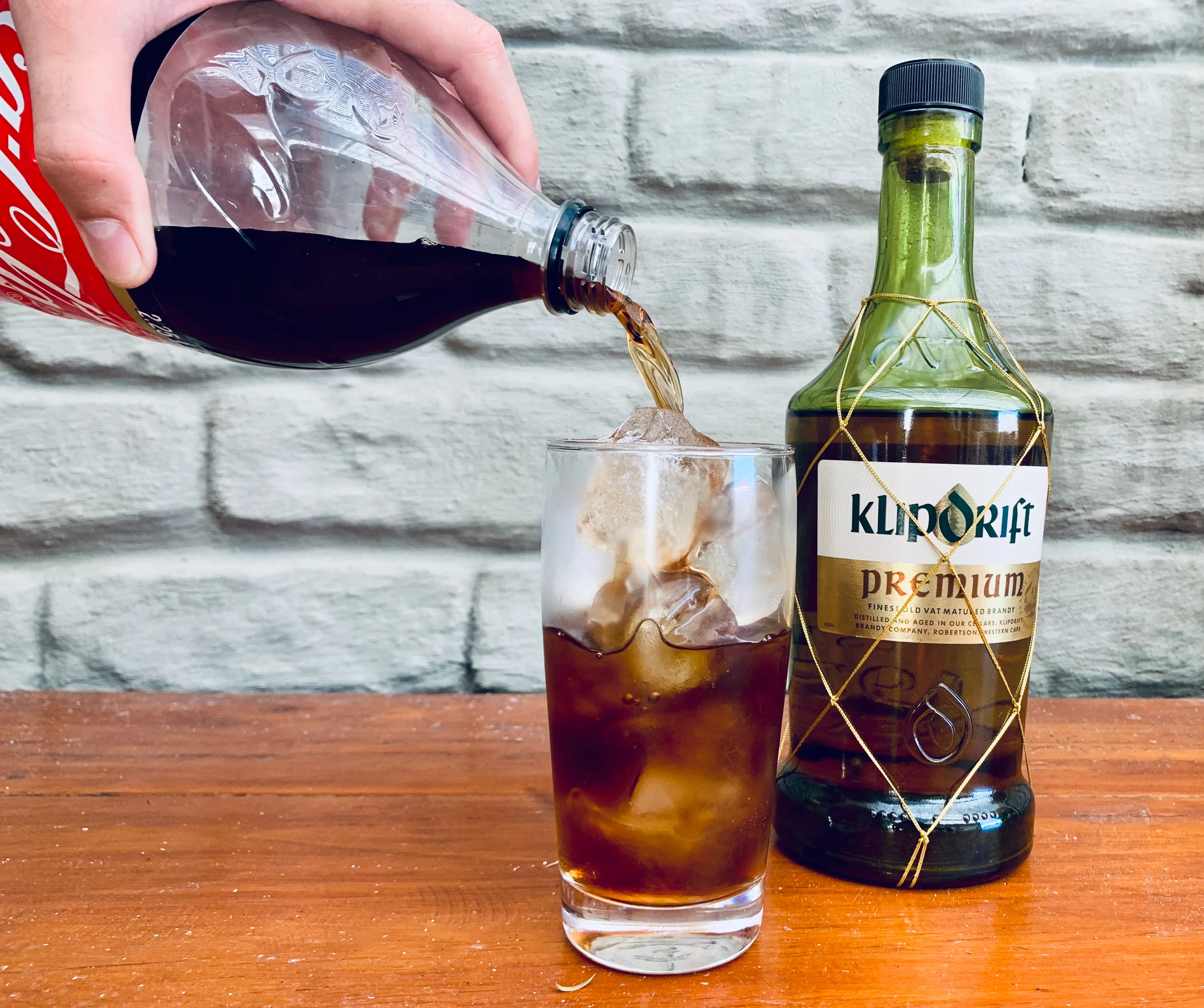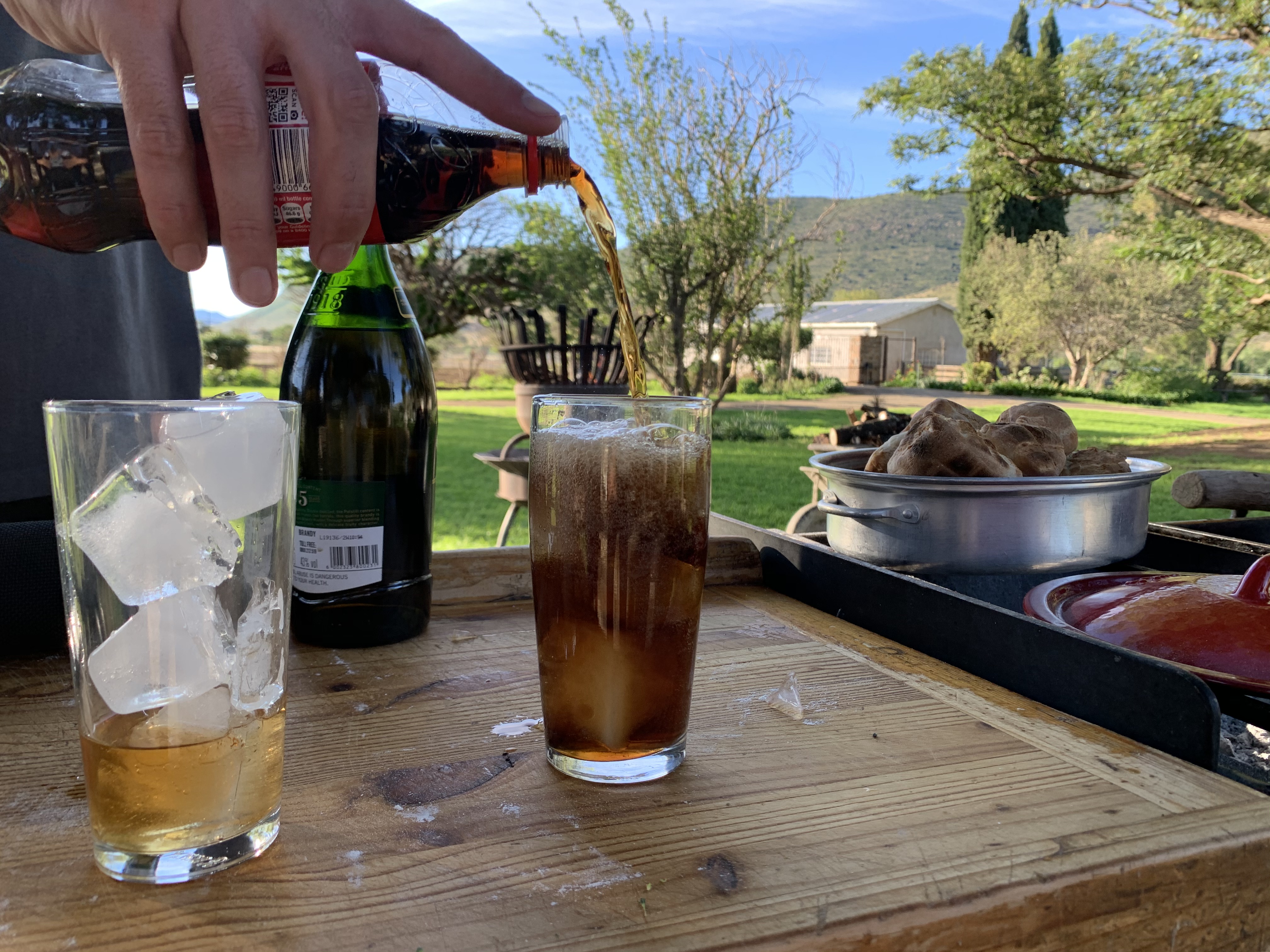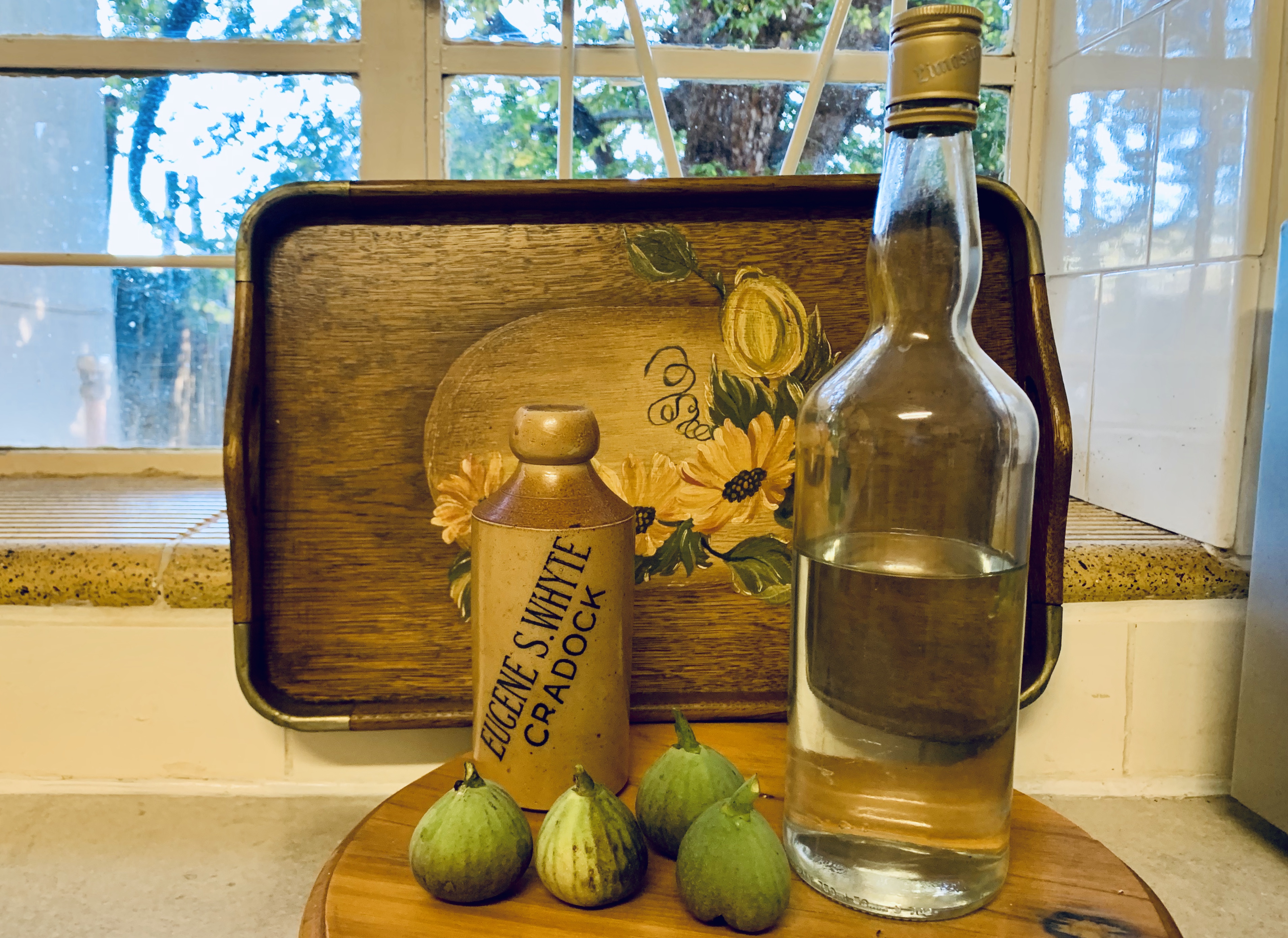FARM TO TABLE
Liquor Licence: Brandewyn vir die Pyn, met eish ja (or apricots)

South Africans are unlikely to go thirsty as they turn to Google for ‘how to make your own alcohol’ and retailers promote pineapple/yeast/sugar specials. If you’ve got some brandy in the cupboard why not have some brandewyn vir die pyn?
As we’re entering the sixth week of the national lockdown in South Africa, things are starting to get serious. Everything was on schedule to keep until 16 April but alas, times have changed. I’ve now counted my remaining bottles of wine and worked out – to the millilitre – what I can consume up to the end of this lockdown. It’s less than a glass a day. My husband has counted his beers, too, which yielded similar, dire results. Drinking used to be a sociable affair for us but now, whenever I take the habitual sip from his Castle Light, he gives me a funny look. With the greatest respect to Mr Cele, I hardly consider total sobriety a positive right now.
But I’m not worried; South Africa won’t go thirsty. The fact that one of South Africa’s top Google searches last week was how to make your own alcohol is a case in point. In KZN, one large retailer created a display of pineapples, yeast and sugar in its entrance… a wink to parched South Africans to get fermenting.
South Africans need no encouragement to celebrate our country’s rich drinking culture. However, there’s value in knowing how this culture originated. Wine, yes. But perhaps lesser known is the root of our love affair with brandy.
Brandy distillation began in 1672 when an assistant-cook on board a Dutch East India Company ship in Table Bay distilled 1,000 litres of wine to produce 130 litres of brandy. The unaged spirit, termed firewater, was a hit.
Three and a half centuries later, South Africa’s brandy business is as potent as ever and has become an indisputable part of South African food culture. The liquor, yes. But more specifically, “Brandewyn & Coke”. In fact, it might even be our National Drink. Cognac connoisseurs frown and foreigners laugh… until they try it. “Hmmm… it’s like Vanilla Coke,” one Canadian recently remarked, quite surprised by the combination.

Klippies and Coke. The classic dop; Proudly South African Klipdrift with Coke… met eish. (Photo: Louzel Lombard Steyn)
If it’s not your personal drink of choice, I bet you know at least 10 people who do prefer its sweet, caramelly sting. Along with boerewors, it’s present at every self-respecting South African braai. And like all great legends, it goes by many names. Karate Water. Firewater. Brannas. Klippies & Coke. My grandma often disguises it as a Hot Toddy for a nightcap… (Admittedly, “brandewyn vir die pyn” really helps.) Buffelsfontein recently launched their version calling it the perfect dop for a “Rowwe Bliksem”. In short, brandewyn has firepower and that’s why we love it.
Before you can have it “With Eish”, however, it valuable to know that it grows from a grape. A specific Chenin Blanc or Colombard vine, typically. The Chenin Blanc cultivar originated in France many centuries ago and it was one of the first vines planted in South Africa when the French settlers arrived. We called it “steen” (rock). And what a fundamental role it played…
Clifford Roberts from Visit Winelands calls Chenin “ground zero” for South African wines. “This cultivar is often referred to as a ‘workhorse’: it thrives in the South African climate and quickly became an anchor variety for volume production. Consistent high-yield vineyards required consistent replacement,” Roberts says. Many years on from when the first vines were planted in South Africa, “a re-discovery of Chenin vines that survived the churn of the production cycle is a real advantage”.
In short – and incidentally – SA has some of the oldest Chenin vines and this shows in our award-winning brandy. Yes, some of us drink it with Coke. But the world has been baffled by our ability to make it – neat. Since that cook on the ship had his first taste of “firewater”, South African brandy producers have gone on to win the coveted International Wine and Spirits Competition’s Worldwide Brandy Trophy for the world’s best brandy 16 times. According to Forbes, that’s more than any other country.

A self-respecting ‘brannas’ should fill, at the very least, a quarter of the glass before the Coke is added. It needs that iconic firewater kick. (Photo: Louzel Lombard Steyn)
Accolades aside, brandy is always a source of fascinating tales and, as with the names, there are many great legends. Like the time when one Baron Pieter Van Rheede van Oudtshoorn – the owner of the land on which the iconic Mount Nelson hotel in Cape Town now stands – died at sea on route to SA and was preserved in a lead-lined coffin filled with brandy for four months before he could be buried in Cape Town. Cremation was out of the question, obviously. One cannot help to wonder if the idea for “Boerenmeisjes” – apricots pickled in brandy – originated here…
Years later in Robertson, where some of SA’s oldest Chenin vines grow, the iconic Klipdrift brandy originated with similar, extravagant valour. Legend has it that Jacobus Petrus Marais, Klipdrift founder Kosie Marais’ father, saved a farmer named Bruwer from drowning in the Breede River. To show his gratitude, Bruwer gave a portion of his farm – a section called Klipdrif – to Jacobus. It was here where Kosie set up his first backyard distillery and began crafting what has now become one of SA’s most popular brandies.
Many great things have kicked off in the humble old backyard… Witblitz being the ultimate ingenious example.
In the 19th century Cape Colony it was a general practice to distil “brandy” from the dregs and husks – aka “doppe” – that remained after the grapes were pressed for wine. (The term “doppe” is still used today, when we’re pouring them.) When the Afrikaners trekked north over the Drakensberg Mountains, they took their ways with them. In the Cape, the clear “brandies” distilled from grapes were generally known as Witblits, according to the Groot-Marico, (the heartland of SA moonshine) website. Up north, however, many different fruits were fermented and distilled. Marula fruits were a hit, as were figs. But the first prize were omnipresent, drought-resistant, humble yellow peaches. From this was produced the iconic South African moonshine known as Mampoer, or “perskebrandewyn”.

The last remaining ‘Fracking Water’ from Gert & Louise Lotter’s Karoo moonshine plant. The witblitz was distilled from old wine, much like the first ‘firewater’ aboard that Dutch East India ship in 1672. It’s the original South African ‘brandewyn’. (Photo: Heilie Marais)
Louise Lotter and her husband Gert from Hofmeyr in the Eastern Cape used to “stook” their own moonshine brandy from old, sour wine. “I used peaches once, but the sour wine just goes so much faster. We put a gas primus under the distiller and fired the kettle up. To test it, we used to throw a line of the liquor on the floor and light it up. If it burns, it’s ready.
“We had a dedicated following for our ‘Fracking Water’; that’s what the people called it. They ordered it by the crateful.” In high times, the Karoo moonshine constituted between R7,000 and R8,000 to the Lotter household. That’s a Biblical turn from sour wine.
These are Biblical times indeed and owning a distiller during lockdown may have its advantages. The rest of us will be praying… for water to change to wine, for manna for those living in the grips of poverty and for death to pass our loved ones’ doors.
If you happen to have brandy at your disposal, try these delightful “Boerenmeisjes”. Traditionally, boerenmeisjes were a way to preserve apricots. The steeping liquor can also be served as a drink for a double dose of apricot flavour. The apricots made for the perfect boozy dessert served with sweet vanilla ice cream.
Ingredients
2 cups water
4 cups dried apricots
1 cup sugar
Peel of 1 lemon
1 cup brandy
Method
Soak the apricots with sugar and water overnight. In a saucepan, boil the mixture with lemon peel until syrupy. Scoop the hot apricots into jars and reduce the sugar syrup until thick. Remove from the heat and cool before adding the brandy. Stir well and pour over the apricots in the jar. Move the apricots around as you go to ensure there are no air pockets.
The apricots get better with time. Leave for at least three weeks before enjoying them. DM/TGIFood






 Become an Insider
Become an Insider